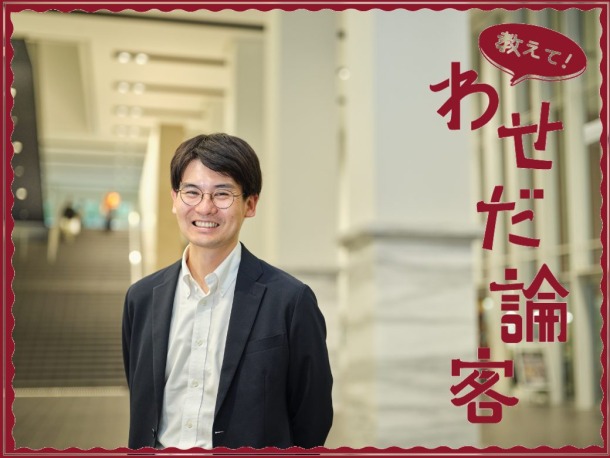
The theme of the 2025 edition of "Lectures by Experts" is "Communication." We will consider communication from the perspectives of several experts. Our third guest is Associate Professor Hiroaki Ishii (Faculty of Commerce), who specializes in "marketing communication." Associate Professor Ishii, who studies marketing methods and their effects, including advertising and promotion strategies, shared his thoughts in detail about communication between companies and consumers.
What is communication in marketing?
It's a way to speak to the hearts of people. I think it's very important to understand not just what people say on the surface, but their true thoughts and motives behind what they say.
INDEX
▼Every point of contact between companies and consumers becomes communication
▼ "Sensory marketing" that influences consumer behavior by appealing to the five senses
▼ I want people to focus on the essence of things, not just on superficial information
Every point of contact between companies and consumers becomes communication
Professor Ishii, what kind of research field is your specialty, "marketing communications"?
I think there are two meanings to marketing communications: narrow and broad. In the narrow sense, it is one of the "4Ps" of marketing. This refers to the "Promotion", of "Product, Price, Place, and Promotion". In marketing, you develop a product and think about things like how much to price it, where to sell it, and how to get people to know about it. In the narrow sense, the part that corresponds to promotion, which thinks about how to promote awareness and purchase of a product using advertising, etc., can be considered marketing communications.
In a broader sense, there is also the idea that every point of contact between a company and consumers is communication. In terms of the 4Ps mentioned earlier, for example, the product design itself is the main theme of product. However, consumers will receive various information from the designed product itself and form an image of the company. This phenomenon can also be seen as part of marketing communication. If every point of contact is a trigger for people to like a company's products and services, then various corporate activities play a role in marketing communication.
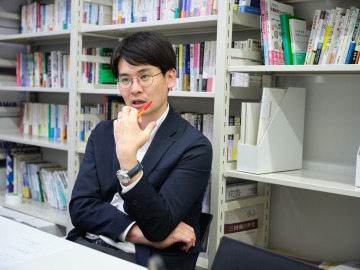
From what perspective do you study marketing communications?
I mainly conduct research from the perspectives of consumer behavior theory and consumer psychology. The background to this is the idea that the center of marketing is the customer (consumer), and understanding the customer is related to the marketing product. Of particular importance is the study of consumer behavior theory, which elucidates the essential principles of consumer behavior by identifying the discrepancy between what consumers "say" and "what they actually do" and their latent needs .
Among these, consumer psychology is a field that places emphasis on psychological approaches and is an academic field that seeks to understand the mechanisms of consumer behavior through the workings of the mind, such as individual decision-making, emotions, and cognition. Consumer behavior theory is highly interdisciplinary, and research is conducted not only from the perspective of psychology, but also from the perspectives of cultural history and anthropology. For example, some researchers take an approach that involves actually entering specific consumption situations and exploring the cultural and social backgrounds through participant observation (*).
*The researcher joins the society or group that is the subject of the research and observes it over a long period of time.
"Sensory marketing" that influences consumer behavior by appealing to the five senses
If there is any research topic that you have been focusing on recently, please tell us more about it.
Recently, I have been focusing on the field of "sensory marketing." This refers to a marketing technique that influences consumers' emotions and purchasing behavior by appealing to the five senses of sight, hearing, smell, touch, and taste. For example, I am researching how the music and scents in a store, the texture of products, and package design affect purchasing motivation.
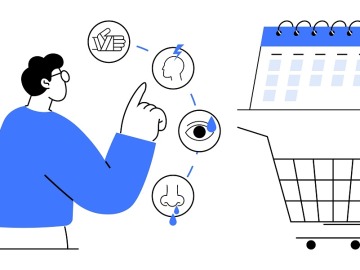
In my seminar, we conduct research while keeping in mind the broad meaning of the word and being conscious of the broader form of marketing communication, while also looking at advertisements that correspond to the narrower meaning. One student focused on the fact that the evaluation of an advertisement changes depending on the brightness of the lighting. Summarizing existing research, it is thought that humans emphasize secondary features in bright places in order to see things more concretely, and that in dark places they emphasize essential features in order to see things abstractly. For example, if we consider a clock radio, in a bright place where secondary features are emphasized, we will be interested in the quality of the clock that comes with the radio, but in a dark place where essential features are emphasized, we will focus on the quality of the radio itself, such as sound quality. Knowledge like this will become a guide for how to sell products.
In my research, I have also investigated queues at convenience stores during the COVID-19 pandemic. I looked into the extent to which social distancing is affected by the color of the lighting in the sales area. I hypothesized that under "warm lighting (reddish lighting)," people tend to maintain social distance because they feel closer to others, whereas under "cool lighting (blue or whitish lighting)," people feel farther away from others, which shortens the distance between people in lines. When I analyzed the data, the results were exactly as expected. In other words, lines were longer under warm lighting and shorter under cool lighting.
I have also investigated the effect of the "face direction" of an advertising model on the effectiveness of an advertisement. A monitor survey showed that advertisements that used photos of people with the same face direction as the Mona Lisa were more effective. Although there are still some aspects that cannot be explained, this suggests that historical trends in portraits and the brain's cognitive processing may be related to the evaluation of advertisements.
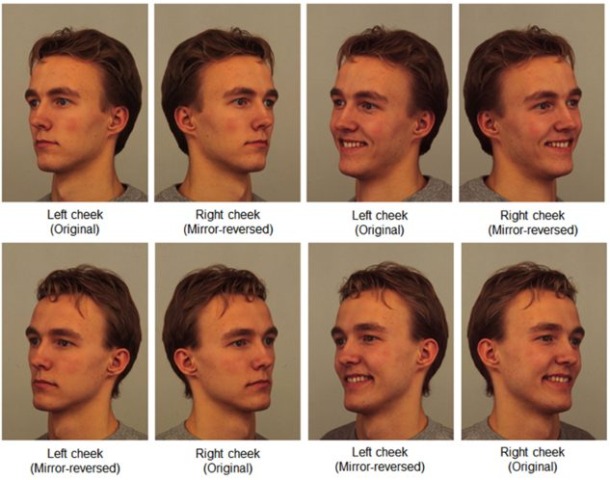
Even if the facial expression is the same, the evaluation changes depending on whether you look at it from the left or right side. From Park, J., Spence, C., Ishii, H., & Togawa, T. (2021). Turning the other cheek: Facial orientation influences both model attractiveness and product evaluation. Psychology & Marketing, 38(1), 7–20.
Professor Ishii, you also use AI to analyze consumer behavior. With the advent of the AI era, have there been any changes in the field of marketing and communications?
The advancement of AI has had a huge impact. For example, by recording customer behavior in a store with a video camera and automatically analyzing it with AI, it is now possible to obtain highly accurate sales promotion data, such as which product a customer is undecided about or where the customer stops. Previously, humans would spend hours reviewing the video, but now AI can analyze it instantly.
In addition, the use of AI is extremely useful as a starting point for creativity, such as generating advertising slogans and package designs. Furthermore, cost reduction and efficiency are also being promoted, for example by conducting group interviews with multiple AI generators with personalities and using this information for marketing purposes.
I want people to focus on the essence of things, not just on superficial information.
Are there any situations in which you apply your knowledge of marketing communications in your daily life?
Marketing is often thought of as a method for selling products, but it can actually be used in all aspects of daily life. For example, when you want to communicate something to someone, you can convey your message more accurately by choosing words that take into account the other person's potential desires and interests. This kind of behavior itself can be said to be communication that uses a marketing perspective.
Although there are some critical voices against advertising, such as "it deceives people who don’t have access to as much information," today's consumers are smart and can see through tricks right away. What is truly effective is to understand the deep needs of the other person and respond to them sincerely. By learning more about advertising and promotion strategies from this perspective, you can improve your ability to keep your antennae up and notice the subtleties of behavior.
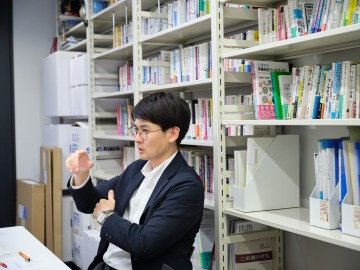
What does Professor Ishii think "communication" is?
It is a way to touch hearts of other people. It is important to understand not only what is being said, but also the true thoughts and motives behind it. This is very important in both marketing and everyday human relationships.
In particular, in marketing, the success of product development and promotion depends not only on superficial needs, but also on whether or not you can recognize the underlying "what people really want." That's why I think it's important to interact with a variety of people during your student days, gain a wide range of experiences, including failure, and increase your repertoire of ideas.
Finally, please give a message to Waseda students.
In my seminar, we value real-life contact, such as actually visiting stores to observe them and doing fieldwork in the city. Please don't be satisfied with just the information you can get your hands on but get into the habit of looking at the essence and background of things. Generative AI and search engines are convenient, but the experience of going to the site and using your five senses to obtain a wealth of information is an irreplaceable asset.
Marketing is a discipline that is rooted in everyday life. You can learn from everything around you. Trust your own instincts and try all kinds of things.
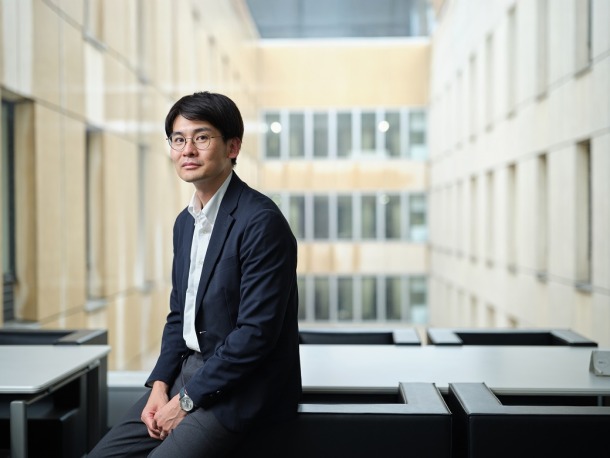
Hiroaki Ishii
Faculty of Commerce Associate Professor. Graduated from Waseda University School of Commerce. Completed the master's program at the Graduate School of Commerce, and a Ph.D. in Commerce from the same graduate school. After working at Chiba University of Commerce Faculty of Service Creation as an Associate Professor, Seikei University Faculty of Economics as an Associate Professor, and Aoyama Gakuin University Faculty of Business Administration as an Associate Professor, he assumed his current position in September 2023. He specializes in marketing communication, consumer behavior, sensory marketing, and more.
Interview and text: Kenichi Marumo
Photo: Seiji Ishigaki

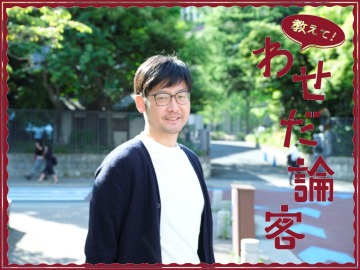
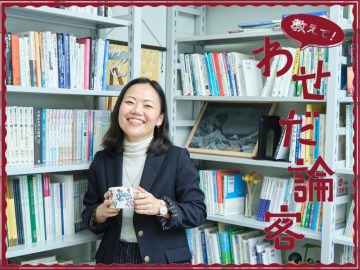
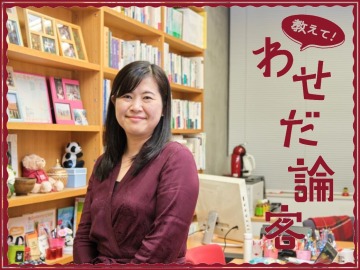

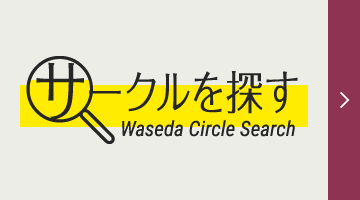
![[Save version] Map of the four main campuses](https://www.waseda.jp/inst/weekly/assets/uploads/2025/09/17cb2975123fc5103172ef60bd98608d-610x458.jpg)

